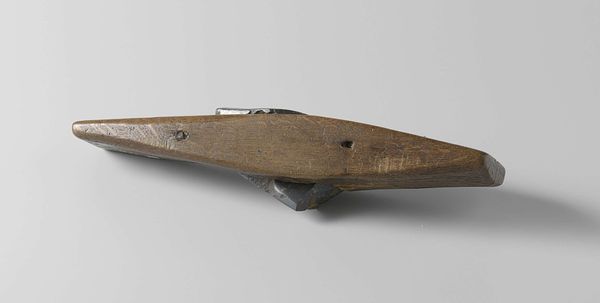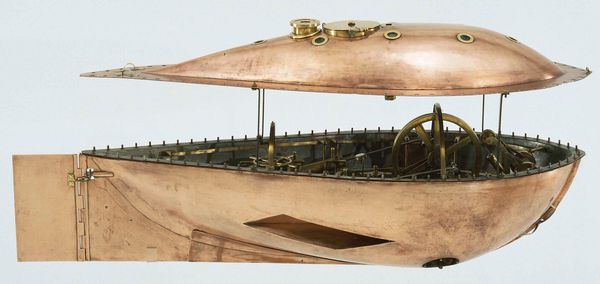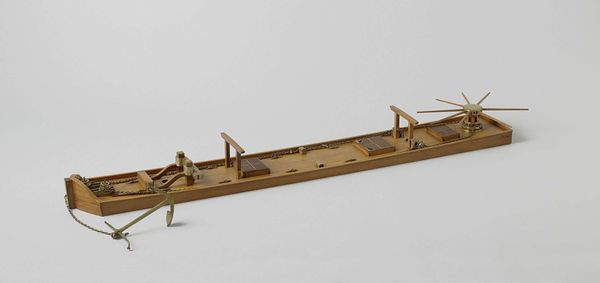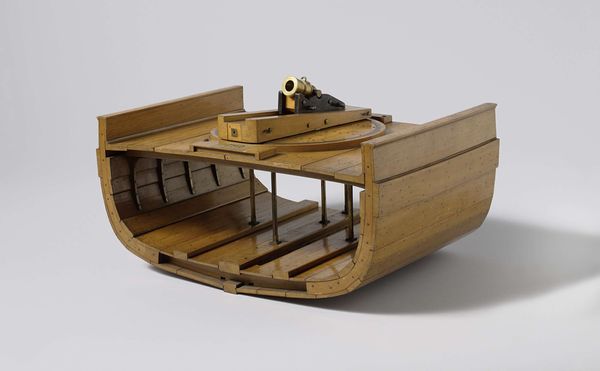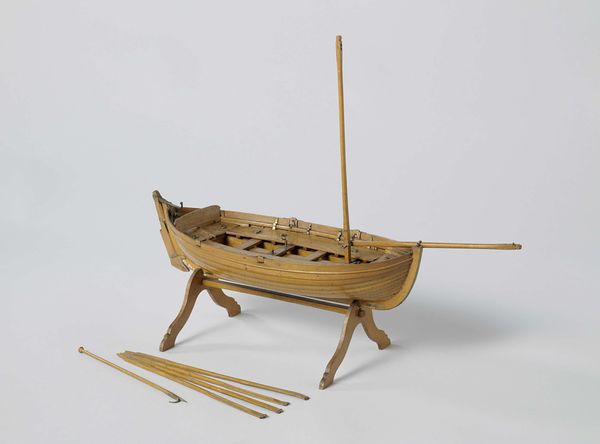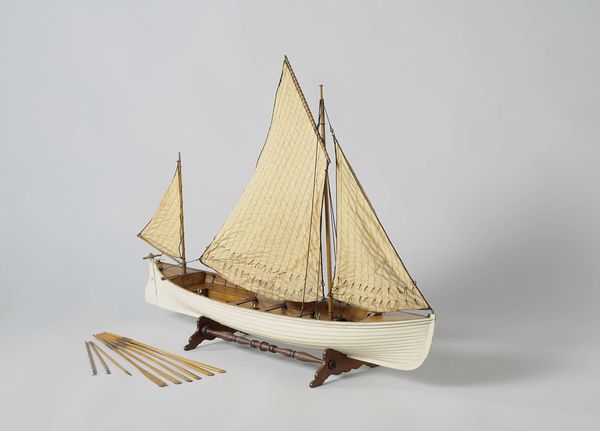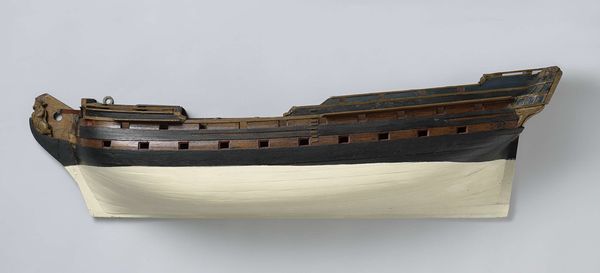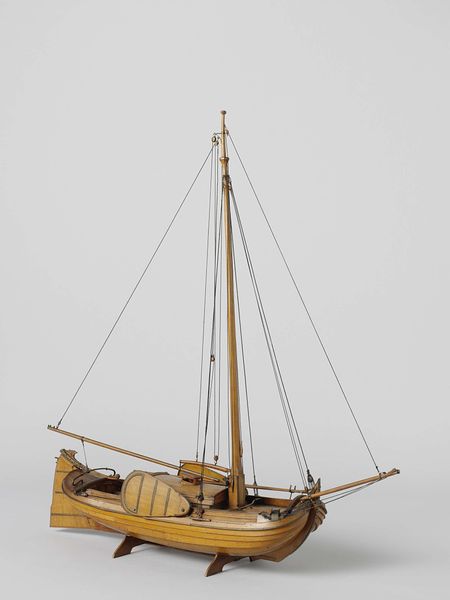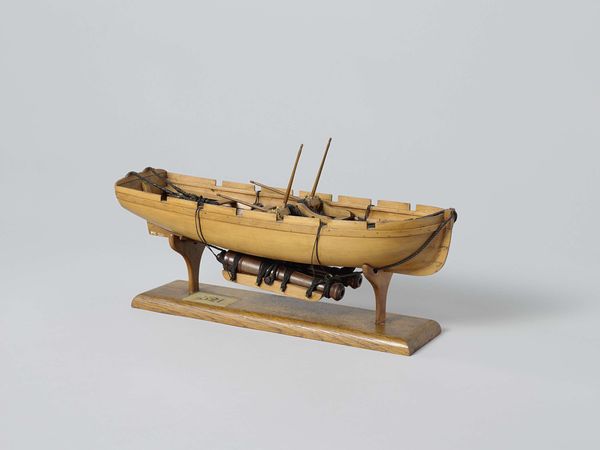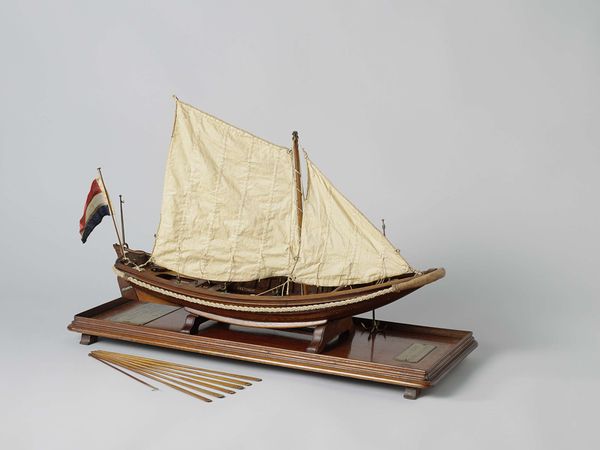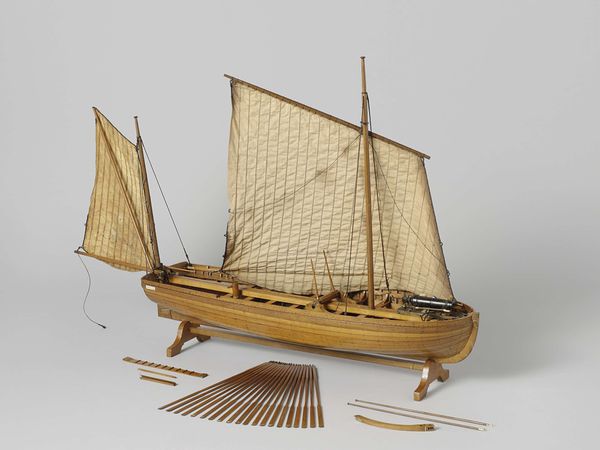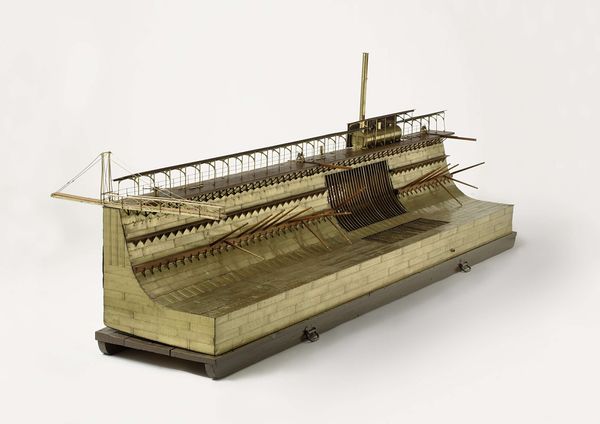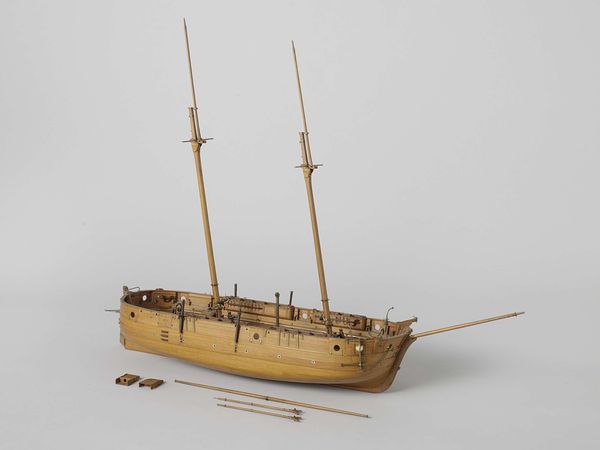
mixed-media, sculpture, wood
#
mixed-media
#
sculpture
#
sculpture
#
wood
Dimensions: height 70 cm, width 240 cm, depth 112 cm, oars length 170 cm, height 80 cm, width 225 cm, depth 84.5 cm
Copyright: Rijks Museum: Open Domain
Curator: H.W. Burman created this compelling sculpture titled "Life Boat," likely sometime between 1870 and 1885. It is a mixed media piece primarily crafted from wood. My first impression is its vulnerability, its fragile woven shell seemingly at odds with the life-saving nature implied by its name. Editor: That is also my immediate response. I mean, a “Life Boat” woven like a basket. It's perplexing, almost unsettling in its presentation of a vessel meant for rescue and survival being seemingly so, dare I say, perishable? It definitely makes one contemplate the symbolic and sociopolitical ramifications behind its construction. What were Burman’s intentions portraying what a lifeboat is in such a fragile way? Curator: Indeed, the choice of materials is significant. Wood was certainly prevalent, accessible and relatively inexpensive for its era. Beyond pragmatism, I would imagine that as it imitates local building strategies it underscores resourcefulness. The sculpture challenges notions of durability we might associate with a traditional, metal lifeboat, a type often commissioned by national institutions and constructed by professional outfits. Editor: Precisely, and it forces us to think critically about whose lives are deemed worthy of saving. This 'Life Boat' isn't the sleek, modern vessel we often imagine, equipped for grand-scale rescues; it reflects more rustic times. Its design is, seemingly intentionally, made to invoke otherness. Considering the era, and without deeper contextualization, it would lead me to assume there is potential class, maybe racial issues embedded within the artist's choices. Who are we saving? Whose lives matter most? Curator: A poignant reading. I’d be interested to know more of the socio-economic and regional implications, I’m also considering that in art production, as in most practices, scale implies monumentality, but it lacks that, doesn’t it? By down-sizing the structure he might question ideas of public support, which in this era usually implies colonial politics and control. Editor: Exactly! Burman’s "Life Boat" invites a multi-layered investigation, going beyond aesthetics, and urging an examination of material culture, artistic intention, and intersectional, contextual frameworks. Curator: Yes. Even the fact it's not functional prompts a broader question: What are the purposes and power dynamics surrounding representation of assistance, hope, and rescue?
Comments
No comments
Be the first to comment and join the conversation on the ultimate creative platform.
